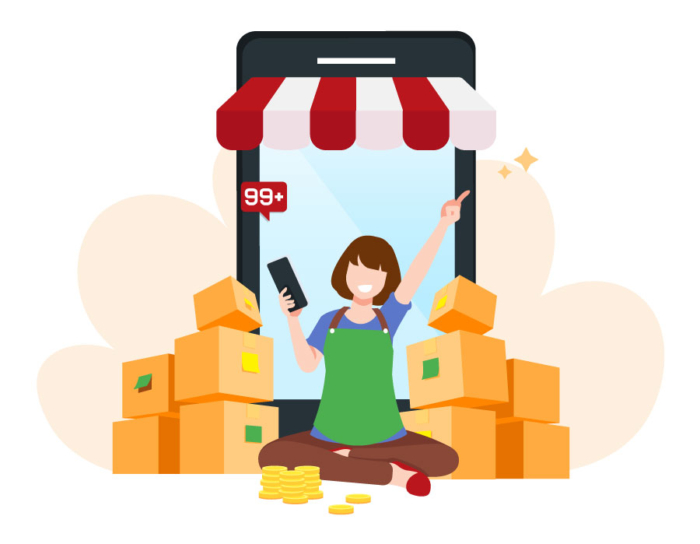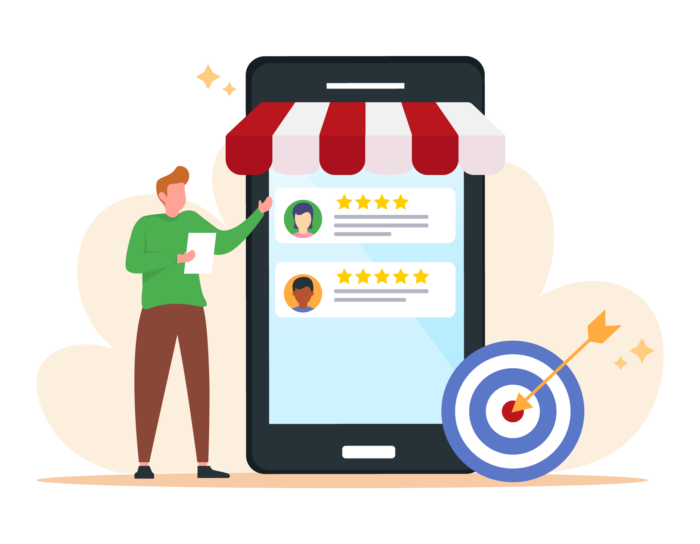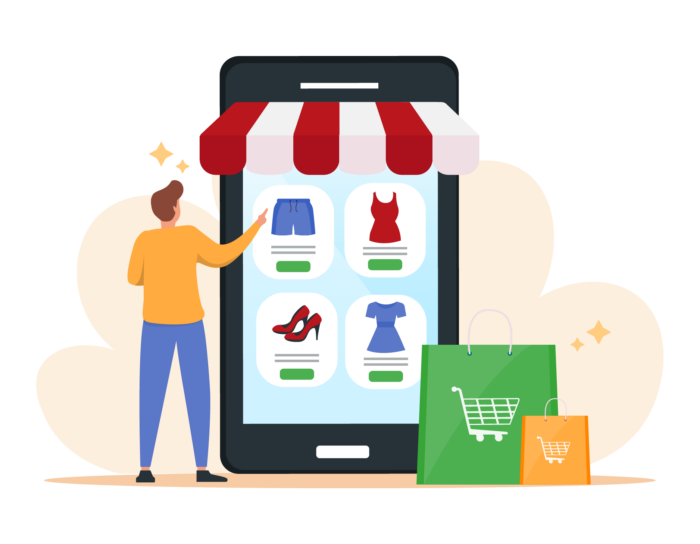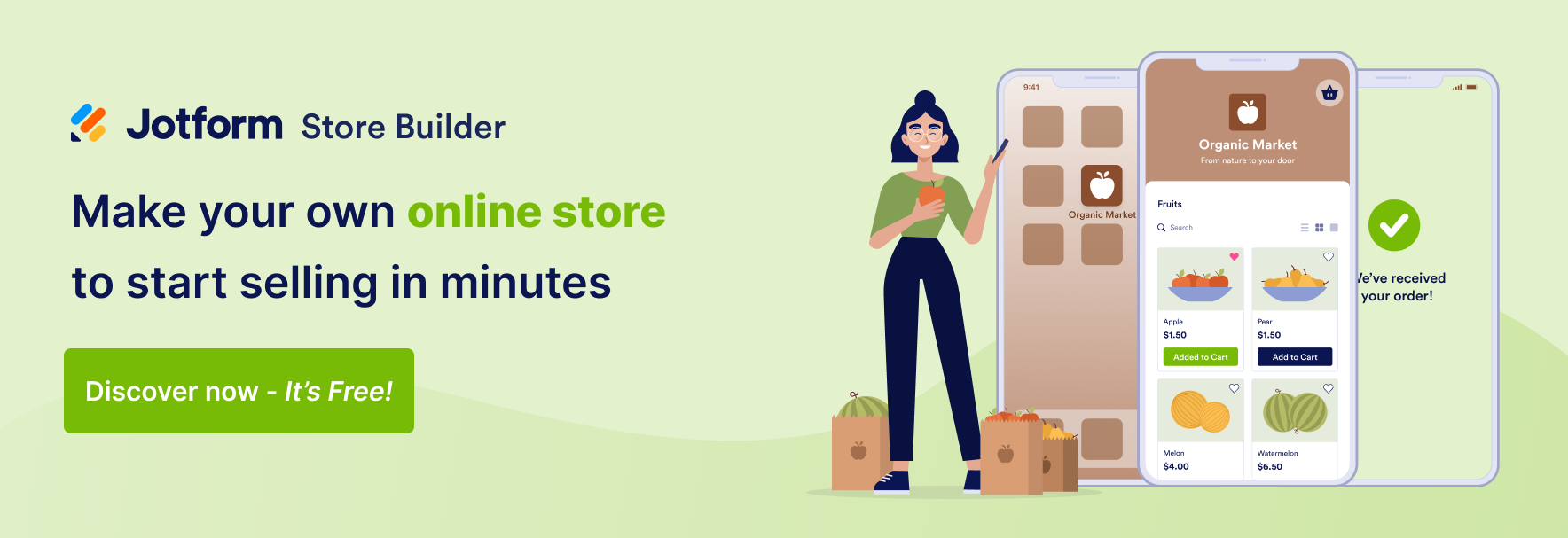When the COVID-19 pandemic forced nations into lockdown, isolating consumers from stores and the brands that fill them, some manufacturers quickly opened online channels that allowed them to bypass physical shops altogether.
Heinz U.K. started its first self-managed online sales program, Heinz to Home, in just seven days, for example. That allowed the iconic company to continue serving customers who couldn’t risk a trip to the grocery store.

By making this move away from brick-and-mortar stores toward online sales, producers were adopting a sales model that’s as old as commerce itself — direct to consumer, or D2C. In traditional business-to-consumer (B2C) selling, brands rely on retailers — brick-and-mortar stores, online aggregators like Amazon, and other third-party dealers who make the sales to consumers.
With the D2C model, the creator is the seller. Now that we’ve seen how traditional retail supply chains can be threatened at a moment’s notice, many producers — both legacy brands like Heinz and upstarts like contact lens seller Hubble — are investing in D2C sales with great success. Statista projects U.S. online D2C sales will be worth $21.25 billion in 2021, nearly doubling the $10.73 billion value of the sector in 2018.
Before the pandemic, direct online sales channels were a lifeline for startups and a novelty for retail brands; now they’re necessities for all. Whether you represent an established brand or an entrepreneurial disruptor, you need to understand D2C sales. This guide provides the basics.
Chapter synopsis
- A brief history of the D2C model. In this chapter, we trace D2C sales from the model’s origins through the digital transformations that make D2C e-commerce the sales powerhouse that it is today.
- Benefits and challenges of D2C sales. Learn how D2C compares with traditional retail and why some brands struggle to make the channel work.
- Direct-to-consumer marketing. Successful marketing for D2C brands doesn’t always match traditional retail strategies. Here are the basics of managing D2C consumer relations.
- Where is D2C headed? The digital version of D2C sales is still an emerging industry. Find out which trends to watch out for in the coming years.
- Online tools for D2C businesses. You can’t sell online without the right digital tools. We’ll identify some of the e-commerce infrastructure you’ll need to succeed in D2C.
“The D2C sales model sidesteps the historical middleman — and profit-margin erosion — and focuses on brands going directly to customers, controlling the entire customer experience and value chain,” says Tim Curtis, president and CEO of D2C marketing agency CohereOne. If that sounds like a model that could work for you, keep reading, and don’t forget to bookmark this guide for future reference.
A brief history of the D2C model
Barter, the oldest form of trade, didn’t need an intermediary. When the first flintknappers traded their hatchets for grain, those transactions were strictly direct to consumer. But D2C doesn’t mean much without retail as a foil; folks probably just called it “trade.”
Retail sales likely date back to at least the seventh century BCE, when residents of what’s now Turkey bought and sold in a way we might recognize as B2C behavior. In all the intervening years, craftspeople sold their creations directly to consumers. That makes D2C sales about 2,700 years old.

A lot has happened in those millennia. As technology advanced, producers found different ways to reach their customers both directly and from a distance. Here are a few of the highlights of D2C’s history, as defined by the technology that made new forms of direct sales possible:
- 1498: The printing press had scarcely been invented before an enterprising Italian publisher named Aldus Manutius invented a mail-order catalog to sell his books. Other printers followed suit, including Benjamin Franklin in 1744. And print catalogs still have a place in the D2C marketer’s arsenal; Curtis says that today’s innovative D2C brands are “embracing sophisticated catalog and direct mail programs to complement their best-in-class digital experiences.” Then and now, “the brain responds best to mental mapping in a print format,” Curtis says.
- 1978: The original Ginsu knife commercial wasn’t the first instance of direct-response television (DRTV), a D2C channel that invites viewers to “call now” or visit a website to close the sale — but it’s probably the most influential. The two-minutes-or-less ad spot provides the building blocks of many subsequent DRTV efforts, both short and long, with the latter being known as “infomercials”: “But wait, there’s more.” “Now how much would you pay?” “Here’s how to order!” You know all these lines. Over 15 years of direct-response commercials, Ginsu’s parent company earned sales worth $500 million and popularized a TV genre — and a D2C sales channel — that continues today.
- 1994: In 1991, the National Science Foundation, which controlled the early internet in the United States, lifted a ban on commercial use of the web. But it was 1994 when the invention of Secure Sockets Layer (SSL) encryption paved the way for online credit card processing. That same year, online retail began to creep into the mainstream. The New York Times marked the occasion with the headline “Attention Shoppers: Internet Is Open,” reporting on a Philadelphia man buying a Sting CD online. But e-commerce was financially prohibitive for most brands and startups. The internet’s use as a primary D2C channel would have to wait for costs to come down.
- 2006: The 1990s saw the first stirrings of the e-commerce revolution, but it wasn’t until 2006 that an online snowboard shop called Snowdevil spun off into online store platform Shopify. Shopify wasn’t the first or the only e-commerce platform, but it cracked the code of user-friendliness for many of its customers. By 2009, Shopify retailers hit the $100 million sales benchmark. Today, Shopify and its many competitors — Weebly, Wix, and more — help D2C entrepreneurs start selling exclusively online.
As a result of these online advancements, e-commerce has launched countless direct-to-consumer companies. Below are just a few examples of today’s leading D2C brands.
Top direct-to-consumer brands and their products
- Dollar Shave Club: men’s grooming products
- Warby Parker: prescription eyewear
- Casper: shippable mattresses
- Allbirds: shoes and apparel
- Glossier: makeup and skincare
- Bonobos: men’s apparel
Many D2C brands sell fast-moving consumer goods (FMCG), replenishable products that sell quickly at relatively low price points. That’s no accident. E-commerce, D2C, and the rise of the sales subscription model allow many FMCG producers to thrive. You can learn more about direct to consumer for FMCG brands here.
Keep reading to learn why D2C sales work so well — and what challenges aspiring D2C sellers may face.
Benefits and challenges of D2C sales
The D2C market is growing. According to eMarketer, the number of D2C buyers has expanded significantly every year since 2017, leading to a projected total of 95.4 million digital D2C buyers in 2021. Clearly, the model is paying off for sellers. Here are some of the benefits that draw brands to this sales model, followed by a few of the difficulties that can stand in the way of D2C success.

Advantages of the D2C model
The D2C model offers advantages to all types of sellers, from low-cost consumer goods to luxury apparel. For instance
- The D2C sales model provides greater control over customer/brand relationships. By selling directly, brands retain end-to-end control over all interactions with their customers. This gives them more opportunities to differentiate themselves, to learn about their buyers, and to build relationships.
- By retaining control of all buyer data, D2C brands can better understand their customers. “The D2C model isn’t a pure play on selling more,” says Paul Savage, vice president of partnerships for digital experience platform Core dna. “It’s also about knowing your customers and understanding local trends.”
- Direct-to-consumer sales eliminate competition at a crucial moment. Retailers place brands side by side on the shelf. Online retailers place competitors in grids on an even bigger shelf. Buyers who’ve already committed to one brand may be lured away at the last minute with that kind of competition.
It also protects brands from retailer mishaps. If the corner shop runs out of stock, or an online megastore has a site malfunction, buyers may associate those negative experiences with the brand. The D2C model places all the responsibility in the hands of the producer.
By controlling sales channels, D2C brands can gather much more specific information about their buyers. Then they can use that data to build personalized shopping experiences.
By selling D2C, brands compete at an earlier stage in the buyer’s journey. By the time the customer is in their e-store, there’s no distraction. That’s a powerful benefit, especially for consumer packaged goods, says Savage.
“Traditionally, supermarkets have not just one brand but 10 or 15 brands competing for shelf space. They have their own private label brands. Traditional sellers are getting squeezed.”
You may be surprised that we didn’t list lower prices, although D2C sellers certainly can control their retail prices to a greater extent than wholesalers. Retailers survive on the margins between their wholesale costs and the prices their customers pay, so they set price tags accordingly. At first glance, the ability to sidestep retailer markups may seem like the key benefit of selling directly. In practice, things aren’t that simple.
Many D2C brands focus on luxury or near-luxury goods. Lower prices aren’t always good for brands like that. And many brands sell through their own D2C channels as well as wholesale to retailers, who may drop producers that actively undercut their prices. So while price control is an advantage for some D2C sellers, it isn’t a sure thing.
Despite these advantages, there are barriers to entry for aspiring D2C sellers. None of them are insurmountable, but depending on the business, the difficulties of setting up D2C channels may not offer an attractive return on investment.
Top challenges of creating D2C sales channels
For all its advantages, the D2C model isn’t right for every manufacturer. Here are some of the forces that may keep brands locked into partnerships with retailers.
- Selling directly to consumers requires additional infrastructure. In addition to producing their products, D2C companies have to manage logistics, online payments, customer service, and marketing. Third-party vendors can help in all these instances — but the cost-benefit analysis doesn’t always favor D2C.
- Direct-to-consumer channels may lead to conflict with retailers. As established brands begin to break into D2C channels, some of their wholesale partners are crying foul. We consider Heinz’s quick move to D2C as exemplary, but when news of the Heinz to Home program broke, retailers complained that Heinz was undercutting them on prices. They also worried that the move could create further shortages in the retail supply chain. (Heinz promised the D2C channel wouldn’t affect trade deliveries.)
- Online advertising competition is fierce — and costly — for D2C brands. Today’s D2C brands sell online, which makes pay-per-click (PPC) advertising the marketing channel of choice. That can lead to bidding wars, driving smaller players out of the running.
“Early on in the pandemic, D2C brands learned a very painful lesson,” Curtis says. “In highly competitive categories, especially for apparel brands, the cost of certain keywords and phrases ran very high. It was inflationary pricing because everybody was bidding.”
While there are solutions — Curtis recommends combining online ads with offline outreach like direct mail — the bidding model of PPC advertising can be a surprising expense for new e-commerce outfits.
These benefits and barriers will stack up differently for every brand, but it appears that the advantages are winning out for most.
In 2019, Barclays Corporate Banking reported that nearly three-quarters of U.K. manufacturers operated a D2C channel. Some analysts describe this rapid growth as D2C disruption and suggest it could change the retail landscape in unimagined ways.
However this emerging industry develops, it seems clear that to succeed in D2C, products must be marketed in new and exciting ways.
Direct-to-consumer marketing
Direct-to-consumer marketing budgets are growing quickly, even compared to their counterparts in traditional retail. One 2019 report found that 78 percent of D2C marketers were increasing their budgets; only 60 percent of traditional retail marketers said the same.
That makes sense. Today’s D2C brands aren’t just competing against others in their industry. They’re also up against e-commerce giants like Amazon and brick-and-mortar retailers, and big established sellers can outspend a newcomer at every turn.

The importance of branding in D2C marketing
The solution that most leading D2C brands pursue is stronger branding. They focus on values, style, and personality. Using data-backed insights about their customers, D2C winners build strong, ongoing relationships with their audiences, and they nurture those relationships with everything from email outreach to product packaging.
Take Dollar Shave Club, an exemplar of D2C branding success. Their streaming video ads went viral with an irreverent appeal to traditional masculinity (and an incredibly strong value proposition: cheaper razors).
But the branding doesn’t stop with ads. Dollar Shave Club continues to push the brand’s personality post-purchase through clever, high-end advertising, including extras like men’s humor booklets in their boxes.
“They want to nurture that direct consumer relationship,” explains Curtis. “They want to sell directly to you, but they also want to get all those learnings about you.”
Direct-to-consumer marketing channels
Knowing the audience is the first step. Creating a brand identity that appeals to that audience is the second. The third step, engaging with audiences wherever you can find them, is an ongoing project. Here are some of the strategies and channels that D2C marketers use to build customer relationships — and acquire new customers.
- Direct-to-consumer advertising online. Most D2C marketers list pay-per-click advertising as a key part of their budgets. While the right advertising platforms may differ from one product to another, paid digital ads dovetail nicely with the e-commerce experience. Audiences who love to buy online tend to live online, so PPC ads are likely to reach them.
- Social media interaction. Direct-to-consumer brands engage fully with their customers. That includes casual, fun social media interaction, from influencer marketing campaigns to public conversations. “D2C brands have some of the best success through social channels,” says Tonya Davis, marketing manager of Utah SEO Companies. “This is because social media allows companies to reach their consumers at any time, not just while they are actively shopping. It’s also a great way to engage with consumers and build your brand identity.”
- Email marketing for D2C. Relationships between D2C brands and their customers are ongoing. One way to keep engagement high is to send the occasional offer or discount code through email. Of course, there’s a balance to strike. No one wants to be bombarded with spam. But brands that have something to offer may retain customers by employing a well-designed email strategy. “Email marketing works well for everybody,” says Shaun Taylor, owner and manager of Moriti Safaris, who markets this D2C service company.
- Direct mail supporting e-commerce. It may seem counterintuitive to support an e-commerce brand with direct mailers or paper catalogs. But Curtis points out that studies show readers retain more information from reading print than screens, and that marketers can harness the brain’s preference for paper with direct mail. “Silicon Valley startups remain among the largest investors in the print marketing category,” Curtis says. “They know that it’s not about putting a pretty catalog in the mail but unlocking the brain’s dormant response centers through the power of touch.”
This list is by no means comprehensive. Television, radio, events, billboards — any of these channels might be the key to gaining market share for D2C brands.
One thing’s for sure: D2C marketers will need to be flexible and responsive to thrive in this quickly changing industry. Next, let’s look at some of the trends and forces that will shape D2C retail in the coming years.
Where is D2C headed?
Heinz’s quick pivot toward D2C is part of a broader trend. As the coronavirus pandemic shuttered brick-and-mortar stores, shoppers turned to e-commerce for their daily needs. Direct-to-consumer brands were there to meet them. In a way, though, this was nothing new.
“COVID-19 didn’t necessarily create new trends,” says Curtis. “It just accelerated trends in place exponentially. While we’ll always have some element of a wholesale business model, it will be increasingly challenging to flourish as brands place greater emphasis on controlling consumer relationships.”

In addition to simply becoming more prominent, the D2C industry is poised to change in some significant ways. Here are some of the direct-to-consumer trends brand managers should watch out for in the 2020s and beyond.
- Pay-per-click ad retargeting will lose relevance. Google has announced that it plans to ban third-party cookies from its popular browser, Chrome, by 2022. These cookies — bits of code that sites add to user systems — make ad retargeting possible. Internet users could soon see the end of ads that follow them around from site to site, a strategy many D2C e-commerce brands depend on. Restricting third-party cookies has been shown to reduce advertiser revenues by an average of 52 percent. To prepare, D2C brands should begin to pivot away from retargeting strategies and focus on displaying ads based on keywords, locality, or user behaviors.
- Voice user interfaces will become the norm. As of 2019, a third of the U.S. used voice assistants at least once a month. That trend is likely to continue. As more people access the internet through voice, D2C brands will need to provide voice shopping experiences. They’ll also need to optimize content for voice search to boost discoverability in this growing channel.
- Customers will get accustomed to personal attention from brands. The end-to-end relationship D2C brands have with their customers may have taken some getting used to, but shoppers will come to expect it. “Brands should watch out for continual increased demands and expectations by customers for personalized communications,” says Robb Hecht, adjunct professor of marketing at Baruch College. “They want to ‘experience’ the brand consistently wherever they are.” That means creating a unified brand expression that works on social media, in emails, and even in product packaging.
Perhaps the greatest D2C trend to watch for will be the rise of competition. As e-commerce continues to grow, more brands will enter the space, and they’ll open D2C channels in addition to other avenues of sale. Legacy brands will start to sell directly, as we’ve seen Heinz do. Entrepreneurs will kick off their brands with the online D2C model. Competition will grow.
Brands will need any advantage they can get — and that includes the online tools and infrastructure that make e-commerce possible. Understanding technology is one of the greatest hurdles for would-be D2C sellers. In our final chapter, we’ll take a look at some of the online tools D2C brands need to succeed, today and into the future.
Online tools for D2C businesses
To build a D2C brand, you need a few core elements in place, including
- An online store
- A way to accept payments online
- Forms that collect fulfillment data (shipping addresses, contact information, etc.) from the customer
As your business grows, you’ll also need advertising tools, customer data platforms (CDP), logistics management systems, and maybe an intranet to keep staff workflows organized. But the absolute basics are listed above. Let’s take a closer look at each of them.
Building a D2C e-commerce website
Web developers are everywhere, but few startups can afford to pay for a custom-built website right out of the gate. Instead, many D2C beginners build their e-stores using established website builders like Shopify, Squarespace, and Weebly. (Find our list of the best website builders here.)
These platforms allow entrepreneurs to build attractive, functional online stores without needing a lot of technical knowledge or experience. They also feature backend tools to help manage inventory, track customer behavior, and operate marketing campaigns and sales. Best of all, they’re priced for entry: Shopify plans start at just $29 per month.
Accepting payments online
Before you can start selling things, you need a way to move money from the customer’s account into your own. The payment gateway is the technology that makes this possible. Payment gateways connect websites to payment processors, which connect banks and transfer funds from one account to another.
Most website builders allow users to choose from a few payment gateway providers. They also guide you through the setup process, making the installation of a payment gateway about as easy as it can be. You may have to set up a special banking product called a merchant account before you can start to take credit cards, but setting up a payment gateway through a website builder is just a question of following the prompts.
You don’t need to pay a website builder before you can start selling and taking payments online. You can add customized payment forms from Jotform to an existing site. Jotform is an online form builder that allows anyone to create professional payment forms and other interactive items with an intuitive, drag-and-drop interface. Jotform provides nearly 150 payment form templates to choose from.
Just connect your Jotform account to any one of more than 30 payment processor integrations (including PayPal, Square, and BlueSnap, just to name a few). Add your product images and descriptions to the form by simply dragging and dropping design elements. In very little time, you can set up order forms on virtually any website. It’s a quick, reliable way to get started in D2C retail. To learn more about online payment systems, see our comprehensive guide here.
Order forms for D2C online sales
Jotform’s 900-plus order form templates give online sellers an easy way to sell directly to consumers. These templates provide the ideal starting point for all types of D2C businesses, from restaurants to clothiers to ticket sellers. Find the template that matches your business and start creating customized order forms that encourage sales.
These order forms collect all the information you need to fill orders. You can set up fields to require customer names, phone numbers, addresses, delivery requests, and just about anything else you need to fill the order correctly. Find the Jotform plan that works for you to start selling D2C today.
If you’re thinking of starting a direct-to-consumer retail business, sooner is better than later. The field is getting crowded; just think about how often you buy from D2C brands yourself. As Curtis points out, “It’s astonishing how pervasive direct to consumer has become in our lives.” That’s not likely to change any time soon.













Send Comment: